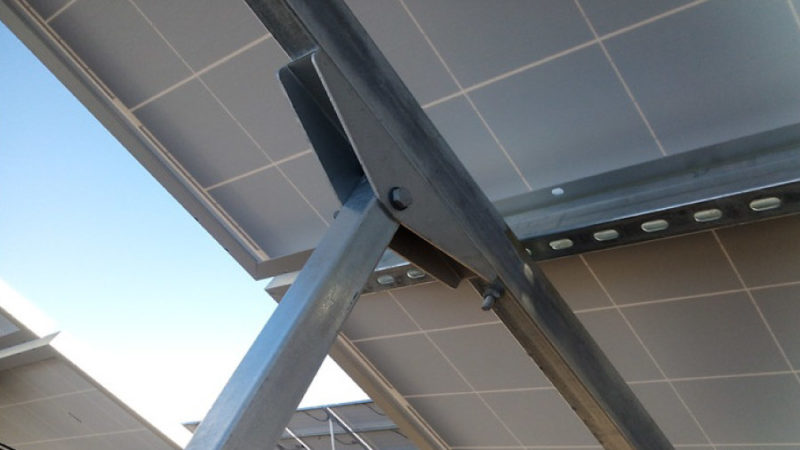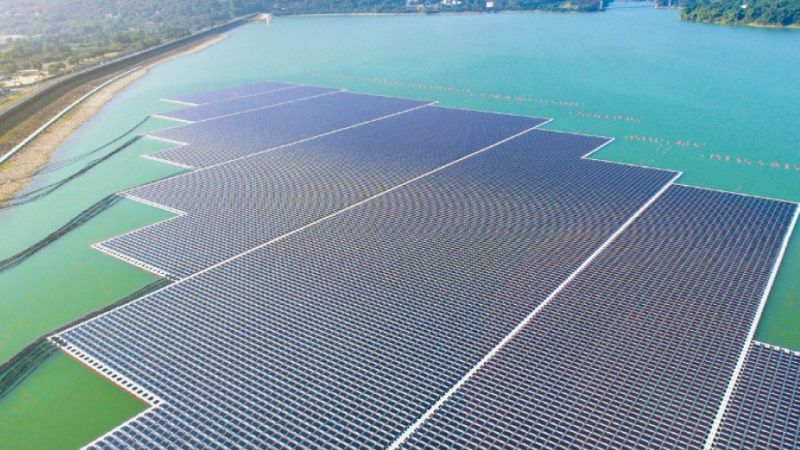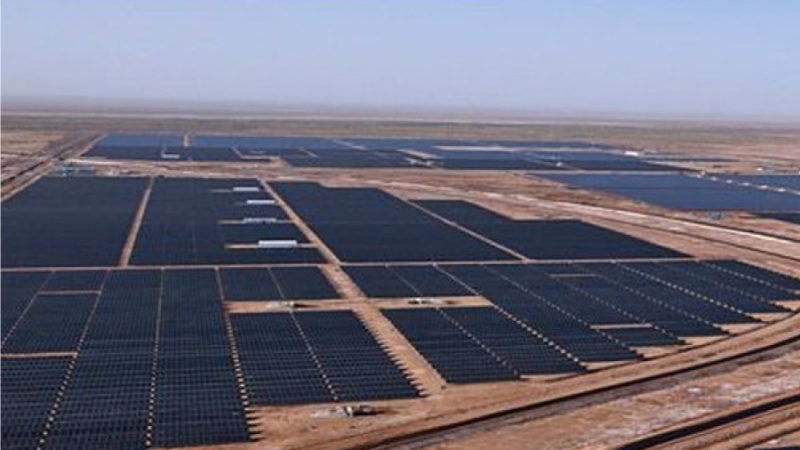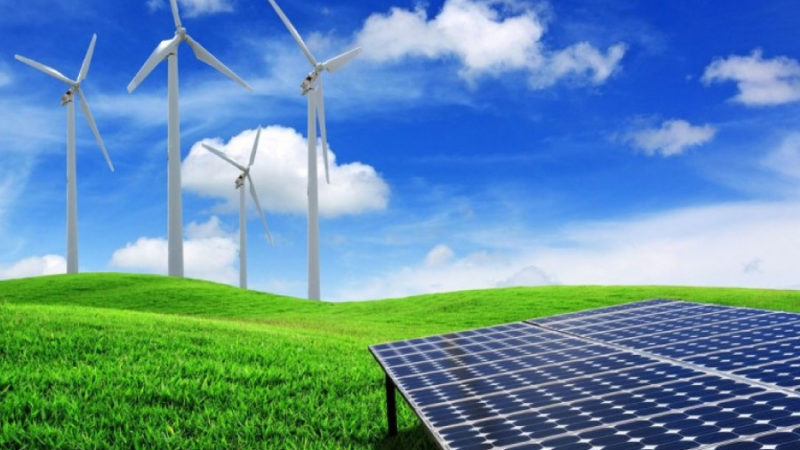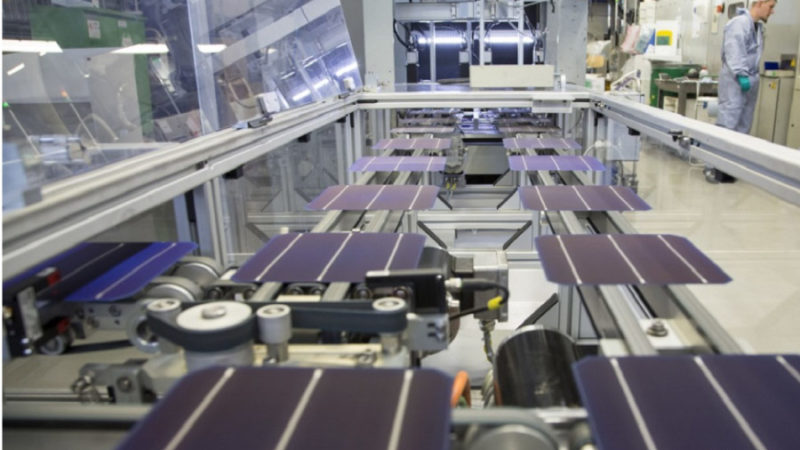Rooftop Solar PV Sector India – Overview & Outlook
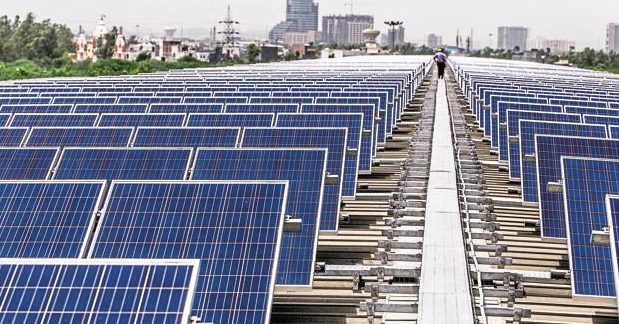
The solar rooftop industry has started to exploit its potential in India. The capacity increase is forecasted annually to reach more than 2 GW by 2019 and more than 3 GW by 2020 and will provide all market participants with appealing growth opportunities …..
Prime Minister Narendra Modi of India announced in 2014 that the country will increase solar energy capacity to 100 GW by 2022 — five times the earlier target. Out of which 40 GW has been targeted to come through rooftop solar installations.
There have been significant efforts by government, regulatory commissions and organizations involved to create the photovoltaic rooftop industry in India, till date..
Basic framework now exists in the country and implementation of rooftop solar power plants has started in true sense. Still currently the large utility scale solar plants dominate the Indian solar landscape, accounting for more than 90 per cent of the installed solar capacity.
The development of solar rooftops in India experienced a major transition to a stage in which a net metering rules for solar rooftops were issued by all but one Indian State.
In terms of technology, the quality of components has increased and there have been drastic reductions in costs. However, there is still a huge gap to fill in to take forward the development of the rooftop solar market and addressing the barriers faced by the stakeholders in the sector.
Recently, the Standing Committee on Energy (2016-17) of the Ministry of New and Renewable Energy has said in its latest report tabled in Parliament recently – that the rooftop solar targets of 40 GW by 2022 is unrealistic and it is highly unlikely that this target will be achieved.
Growth Overview:
As per set targets, the 40 GW is to be achieved by 2022 from grid connected solar rooftops in residential, social, institutional and government sectors in the country.
However, the progress in implementation of rooftop solar is taking place at a much slower pace – as can be seen from the total installed rooftop solar capacity in India of 1.4 GW as of March 2017, which is about 3.5 per cent of the targeted 40 GW by 2022.
The government has also set up several enablers, such as a subsidy of 30% of system costs for installations on residential rooftops to boost this market. Moreover, the advantages of an accelerated 40 percent depreciation along with support the funding under priority sector and reduced interest rates.
The good news is that over the past two years, the rooftop solar market in India has shown impressive growth which could be directly linked to the improvement in price competitiveness of rooftop solar power vs grid power. India added 678 MW of rooftop solar capacity in FY 2016-17, growing at 81 per cent Y-o-Y. Strong market fundamentals including falling costs and improving debt financing mean that the market will continue strong growth trajectory for many years to come.
Market Scenario:
There are currently around 1,000 rooftop installers in the nation that have been accredited as channel partners by the Ministry of New and Renewable Energy and have been categorized according to their performance parameters under a variety of categories. Further, there are now multiple innovative mechanisms of rooftop implementation such as projects being financed by the Developer itself under the RESCO mode and then after a fixed number of years, ownership is transferred to the site owner. Also, large players such as Tata Power and Hero Future Energies have established separate divisions that cater only to rooftops installation to gain a direct access to the huge US$ 30 billion market in the project development area alone.
Though, the most promising method of implementation is currently the RESCO mode. However, since the developer is exposed to the danger of this mode they are not ready to implement systems under this technique with beneficiaries without impeccable ratings or prior track records. Systems under these mechanisms are therefore usually only implemented on large enterprises and not on smaller customers.
There is nothing more important to capture here than the market share of smaller customers, but the decentralized installation of small installations at many places does not bring valuable developer yields and economies of scale.
As per the latest edition of the India Solar Rooftop Map report released by renewable consultancy firm BRIDGE TO INDIA – Commercial and Industrial customers (C&I) remains the biggest market segment as economic viability is most pronounced for such customers. With 65 per cent of total installed capacity, C&I remains the biggest market segment. These consumers account for more than 50 per cent of India’s total power demand and make savings of up to 50 per cent through rooftop solar systems as their grid tariffs are typically between INR 7-10 (US₵ 11-16)/ kWh.
Public sector segment is also expected to show robust growth in the coming years because of a strong government push combined with 25-30 per cent capital subsidy. In contrast, the residential segment is expected to grow relatively slowly because of poor economic viability and lack of financing solutions. According to Bridge to India, the OPEX model has been gaining market share, and is expected to continue on the growth drive for the next few years on account of large public sector procurement programs. OPEX (or BOOT) business model, where a third-party investor owns and builds the system under a long-term PPA with the site occupant, saw new capacity addition of 162 MW in FY 2016-17, accounting for 24 per cent of total market (up from 12% in FY 2014-15 and 19% in FY 2015-16).
| OPEX MODEL : Top 5 Players Market Share Percentage | |
| CleanMax Solar | 24 % |
| Cleantech Solar | 12% |
| Azure Power | 11% |
| Amplus Solar | 8% |
| Rattan India | 5% |
| Consolidate market share of top 5 players | 60% |
This market is fairly consolidated where top five developers account for over 60 per cent market share – though, access to capital remains tight and on-the-ground execution is challenging. However, going forward the consultancy firm believes that this model will continue to grow but will be increasingly driven by tender-based public sector projects.
In contrast, the rooftop solar EPC is still highly fragmented with more than 1,000 authorised installers and as per various reports around 35 large players account for less than 35% market share. Notably, the market share of only three firms is above 2%; Tata Power Solar has a market share of 6.4%, while Sure Energy and Fourth Partner hold 2.5% and 2.2% of the market share, respectively.
On the other hand, in the inverter space, only two companies hold more than 60% of the market share – Delta Electronics has a whooping 36% of the market share and SMA (including Zever Solar) accounts for 25% of the market share.
Other important providers are ABB, KACO and Fronius, each with a market share of about 5-6 percent. In future, with growing market share for ABB and with the admission of new firms such as SolarEdge and Huawei could lead to minor modifications in market leadership.
Overall, the consultancy firm believes that rooftop solar market in India is beginning to realize its potential. Annual market size greater than 1 GW in the current year will be an important milestone for the market. Yearly capacity addition is expected to scale up to over 2 GW by 2019 and over 3 GW by 2020 presenting attractive growth opportunities for all market participants. India is expected to build a total rooftop solar capacity of 13.2 GW by 2021 – as per Bridge to India’s report.
Key Issues & Challenges
These systems are end-user oriented and have more transactional and institutional layers as compared to large solar plants. The major obstacles include lack of economies of scale, weak local distribution infrastructure and poor social outlook. Major institutional reforms, social awareness programmes, technology up-gradation and innovative policy mechanisms need to be implemented to reach the ambitious targets in the next 5 years.
Further, as per a survey conducted in November 2016, although there are net metering guidelines in place but because of lack of experience and maturity in the market, participants from 12 States and 6 UT have indicated that their respective Discoms are still in the process of announcing comprehensive procedures for granting rooftop solar power plants connectivity.
In addition, the grant for connectivity even for a residential solar rooftop systems could take 3-4 months from the date of application in almost every state.
Since approvals and clearances are distributed between several departments, such as Regulatory Committee, state nodal authorities, DISCOMs, municipal and urban authorities – that cause delays.
As far as distribution is concerned, there are limitations on the maximum electricity that can be supplied to the grid at one stage due to the transformer capability at that site. Though this is not a significant barrier currently but may emerge in future when the number of installations goes up.
From the consumer standpoint, it is complicated and ask for considerable time investment to follow with the various departments procedures, apply for grid connections, and then to follow up for bill settlement with the distribution licensee.
Another major challenge is the non-availability of skilled and trained manpower. There are also problems concerning the loosely drafted contract between the developer and the owner for rooftop leasing, and sharing of roles and obligations.
Way Forward:
The need of the hour is to address issues and challenges hampering the growth of solar rooftops across the country as there are multi fold benefits associated with rooftop solar PV systems. It offers a developer lower land and connection costs, higher tariffs as trade and industry tariffs are on rise, along with increase in profits.
On the other hand for Discoms – one of the biggest benefits is the reduction in peak demand during daytime that helps in cutting down the T&D losses as the power is consumed at the point of generation. Moreover, business advantages in avoiding transmission system investment are tremendous.
According to PwC analysis, more than 10,000 MU of electricity will be saved as avoidance of T&D losses alone in year 2022 alone if 40 GW of rooftop PV target is achieved.
Last but not least, it decreases reliance on grid power, diesel engines and provides customers with a reliable long-term energy source. The ambitious solar scale objectives of India have been set almost two years ago. Until now, progress has been commendable . We can trust that the industry has gained considerable traction and attention to a point from which development will very probably slow in the short term.



